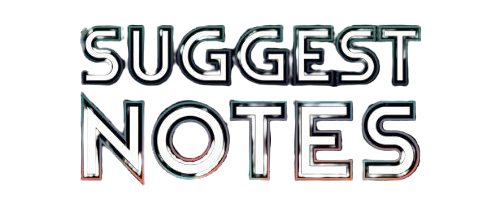We often have phrases we repeat in conversations and writing. One common phrase that can become overused is “With That Being Said.”
While this transition phrase is effective for moving between thoughts, relying on it too frequently can make your speech or writing feel dull. By finding alternatives, you can keep your communication fresh and engaging.
In this article, we will explore several synonyms and alternative phrases for “With That Being Said.” Each suggestion comes with examples to demonstrate how to use them smoothly.
By expanding your vocabulary with these alternatives, you can avoid redundancy and add variety to your communication. Whether you’re crafting a speech or sending an email, this list will enhance your expression.
Is It Professional to Say “With That Being Said”?
Using the phrase “With That Being Said” too frequently can appear unprofessional. While it’s common in casual conversations, overusing it in formal writing may seem lazy or repetitive.
Certain situations allow for its use, like friendly discussions or informal emails, but in professional contexts, it’s better to avoid it.
In business communications, legal documents, or technical writing, relying on casual phrases can undermine your professionalism. Instead, opt for more descriptive transitions that engage your audience. Phrases like “However,” “On the other hand,” or “That being noted” can enhance your writing.
Example of Professional Email
Dear John,
Thank you for sharing the sales report for the last quarter. The data shows steady growth in the western region, which is commendable. However, sales in the eastern region have plateaued and even declined slightly last month. I’d like to discuss strategies to boost growth in the East during our next management meeting. Please let me know if you need any additional information.
Regards, Mary
Pros and Cons
- Pros: The phrase provides a smooth transition between praising western sales and expressing concern about the East.
- Cons: Overusing “With That Being Said” can feel informal or repetitive in emails. More precise phrases like “However” or “On the other hand” are often better suited for professional contexts.
Alternatives to “With That Being Said”

- Having said that
- Nonetheless
- Nevertheless
- Even so
- However
- That said
- Despite that
- On the other hand
- All things considered
- Despite this
- With All Due Respect
- In Light of This
- Given That
- In Contrast
- To Put It Another Way
1. Having Said That
“Having said that” is used to introduce a contrasting point or an exception to a previous statement. It acknowledges what has been said while indicating a shift in direction. This phrase is helpful when recognizing someone’s achievements but also pointing out areas for improvement.
For example, you might say, “Having said that, while your mathematics grades are impressive, focusing more on your language arts assignments could enhance your academic profile.” This statement recognizes success while encouraging further growth.
2. Nonetheless
“Nonetheless” acknowledges the previous statement while introducing a contrasting idea. It’s a way to highlight someone’s accomplishments while recognizing ongoing challenges.
For instance, you might express, “Your innovative solutions have improved our project; nonetheless, enhancing your time management could lead to even greater success.”
In this case, “nonetheless” celebrates contributions while pointing to areas for development.
3. Nevertheless
Similar to “nonetheless,” “Nevertheless” introduces a contrasting point without diminishing the previous statement. It’s a sophisticated way to balance praise with constructive feedback.
For instance, you could say, “Your creativity has been invaluable to our team; nevertheless, improving your communication skills can enhance collaboration.”
This highlights pride in their creativity while encouraging further development.
4. Even So
“Even so” introduces a contrast or exception to previous statements, often addressing a less favorable aspect. It gently expresses pride in accomplishments while nudging for consideration of other factors.
For example, “I’m impressed by your success at your new job; even so, remember to take breaks to avoid burnout.”
This acknowledges achievements while expressing concern for well-being.
5. However
“However” is a versatile conjunction introducing a contrasting idea. It shows appreciation while highlighting areas that may need attention.
For example, “Your dedication has inspired the team; however, incorporating feedback from all members could lead to innovative solutions.”
This conveys pride while promoting a collaborative approach.
6. That Said
“That said” introduces a contrasting viewpoint or additional consideration. It allows for admiration while pointing out growth opportunities.
For example, “Your ability to meet deadlines is impressive; that said, maintaining work quality is equally important.”
This expresses pride in efficiency while emphasizing standards.
7. Despite That
“Despite that” acknowledges challenges but highlights achievements that occurred regardless. It’s a powerful way to express admiration for resilience.
For example, “You faced many challenges this semester; despite that, your improvement has been remarkable.”
This emphasizes success amid obstacles, showing appreciation for perseverance.
8. On the Other Hand
“On the other hand” presents an alternative or contrasting perspective. It recognizes different aspects of a situation, showing appreciation for strengths while noting areas for growth.
For example, “Your creativity in design is unmatched; on the other hand, developing a systematic project management approach could enhance execution.”
This acknowledges talent while suggesting skill development.
9. All Things Considered
“All things considered” summarizes a discussion by considering all aspects. It expresses a comprehensive view of efforts or situations.
For example, “You’ve faced successes and setbacks this year; all things considered, your progress is impressive, and you should be proud.”
This recognizes complexities while focusing on positive outcomes.
10. Despite This
“Despite this” introduces a statement that contrasts with previous negatives. It highlights resilience despite challenges.
For example, “The project didn’t go as planned; despite this, your adaptability under pressure was outstanding.”
This shifts focus from setbacks to commendable responses, showing appreciation for problem-solving skills.
11. With All Due Respect

“With all due respect” is a phrase used to soften the impact of a disagreement or differing opinion. It shows consideration for the other person’s perspective while presenting an alternative view.
For example, “With all due respect, your proposal has merit; however, I believe we need to explore other options as well.”
This maintains a respectful tone while expressing a contrasting viewpoint.
Related Guide:
15 Other Ways to Say “Happy Friday” (With Examples)
12. In Light of This
“In light of this” is a phrase used to indicate that new information affects previous statements or conclusions. It suggests a change in perspective based on recent insights.
For example, “The results of our recent survey were encouraging; in light of this, we should consider expanding our marketing efforts.”
This shows how new information shapes decisions.
13. Given That
“Given that” introduces a consideration or fact that influences the following statement. It helps set context for the contrast being made.
For example, “Given that the project has exceeded expectations, we should recognize the team’s hard work and discuss potential bonuses.”
This acknowledges achievements while pointing to future considerations.
14. In Contrast
“In contrast” is a phrase used to highlight differences between two ideas or situations. It provides a clear distinction while discussing various aspects.
For example, “The eastern region has faced challenges; in contrast, the western region has seen steady growth this quarter.”
This emphasizes the differences in performance.
15. To Put It Another Way

“To put it another way” introduces a rephrasing or clarification of a previous point. It offers an alternative perspective without dismissing the original statement.
For example, “You’ve done great work; to put it another way, there’s always room for improvement in our processes.”
This reinforces the idea of growth while acknowledging achievements.
FAQ’s
Why should I avoid using “With That Being Said” too often?
Using “With That Being Said” too frequently can make your communication sound repetitive and unoriginal.
What are some appropriate contexts for using “With That Being Said”?
“With That Being Said” can be used effectively in casual conversations, friendly discussions, or informal emails.
Can you give an example of a more professional alternative to “With That Being Said”?
For example, instead of saying, “With that being said, we need to address the budget,” you could say, “However, we need to address the budget.”
Are there specific phrases better suited for written communication than spoken communication?
Yes, phrases like “In light of this” or “All things considered” tend to be more appropriate for written communication.
How can I remember these alternative phrases?
One effective way to remember these phrases is to practice using them in everyday conversations and writing.
Conclusion
Incorporating “With That Being Said.”into your spiritual routine can be a transformative experience, offering a quiet, sacred time to connect with God. With that being said, consistency in your prayers at this hour can open doors to spiritual breakthroughs, inner peace, and divine guidance. Whether you’re seeking healing, clarity, or strength,“With That Being Said.” allow you to present your deepest concerns and desires before God in a powerful, intimate setting.
So, take this opportunity to deepen your faith and explore the profound impact of connecting with God in the stillness of early morning.using these alternatives to “With That Being Said,” you can add variety to your communication. Each phrase provides a nuanced way to express acknowledgment and pride while encouraging growth. Expanding your vocabulary will enhance your ability to engage your audience effectively, whether in writing or speaking.

As a content writer with five years of experience, I focus on creating insightful and impactful website content that drives engagement and boosts search visibility. With a strong foundation in SEO and digital marketing, I excel at crafting compelling narratives that resonate with audiences and enhance brand storytelling. My passion for data-driven content creation allows me to deliver pieces that not only inform but also inspire action. Whether through blog posts, web copy, or informative articles, I strive to empower businesses to connect authentically with their customers.







